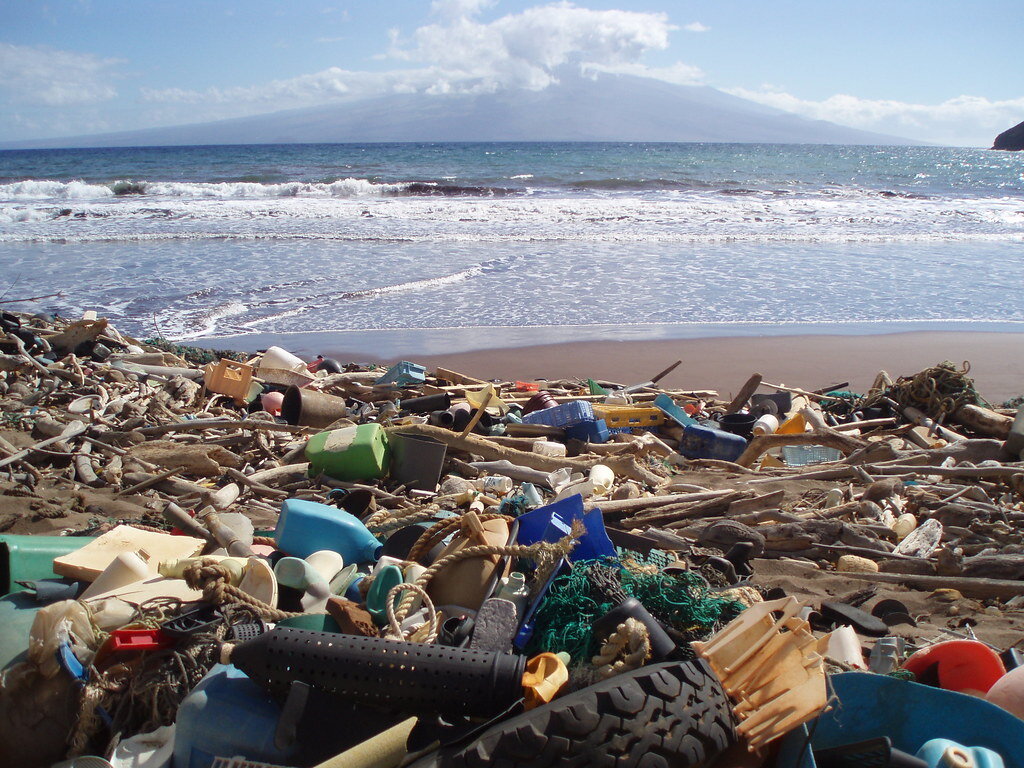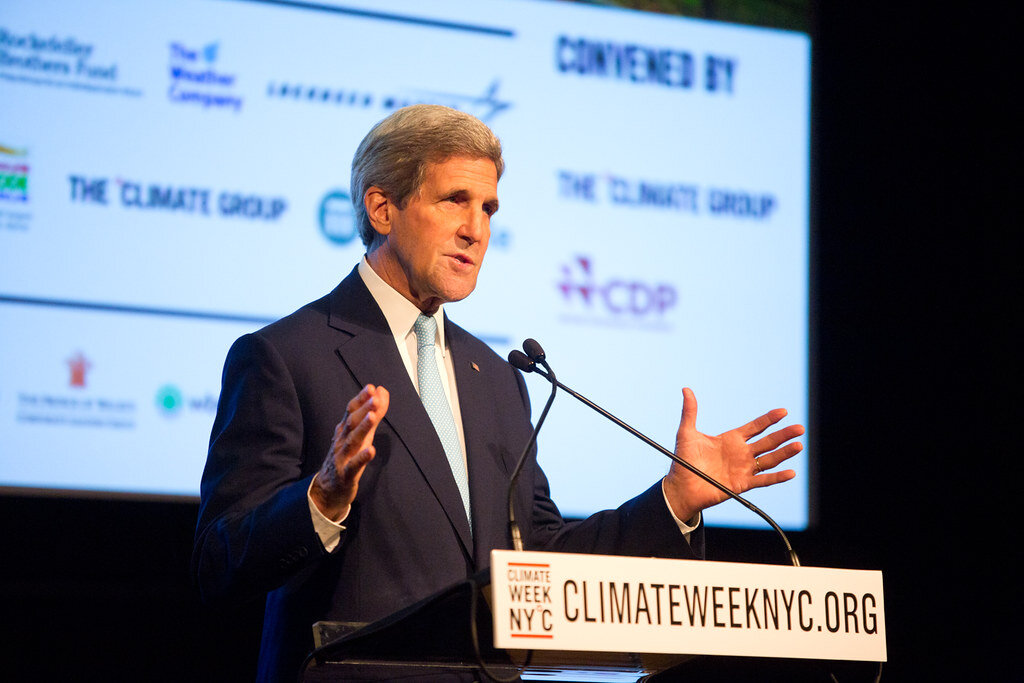By Helen Gloege ’23
Staff Writer
Across remote regions of the world, microplastic fibers and polymer fragments have been found in ocean sediments, beaches around the Antarctic islands, in Arctic ice and in the tissues of living things. Microplastics have been found on Mount Everest, considered one of the most remote and pristine places in the world. Along with the discovery of microplastics, black carbon levels have been spiking, covering glaciers and snow-capped mountains in the Himalayas with fine black particles.
Microplastics generally refer to pieces of plastic smaller than 5 millimeters that derive from plastic products and plastic waste. Microplastics found in the snow of Mount Everest in 2019 have set an altitude record for identification at 8,440 meters, nearly the height of the summit, which stands at 8,848 meters.
In One Earth, an environmental research journal, researchers reported that they had identified 12 fibrous plastic particles in each liter of snow from the highest measurement taken at the balcony area of Everest. Particles were also found in stream water at higher altitudes and at the Everest Base Camp where 79 plastic particles were identified per liter of snow. The samples were taken by a National Geographic research team as an investigation into the impact of climate change on the world’s highest peak. The collected samples were then studied by Imogen Napper, a National Geographic expedition scientist based at University of Plymouth in the United Kingdom, which was the first time microplastics from a mountain had ever been studied. Napper was surprised to find microplastics in every single snow sample analyzed.
It is theorized that the microplastics made it to Mount Everest through a climber’s gear or were blown by the wind. These microplastics were found to be mainly made of polyester followed by acrylic, nylon and polypropylene. These materials are commonly found in outdoor gear made from synthetic fibers that tend to shed trace amounts of fibers while they are worn.
Visitors to Sagarmatha National Park in Nepal and the slopes of Mount Everest have steadily increased over the decades, increasing the potential for forms of plastic waste. In 1979, the region hosted around 3,600 trekkers and climbers. In 2016, that number rose to 45,000, and by 2019, the amount of climbers had increased to the point that queues formed to take turns to reach the summit.
There has also been a significant increase in the plastic products manufactured since climbers began taking to the slopes. About 70 years ago, companies manufactured plastic products at a rate of 5 million tons a year, and it is estimated that in 2020, the world has already purchased 330 million tons, most of which in the form of single-use plastic. It is also estimated that between 93,000 and 236,000 tons of plastic are floating on ocean surfaces. With this massive amount of plastic waste, it almost seems inevitable for microplastics to make their way to even the most remote spaces of the world.
The presence of microplastics on Mount Everest doesn’t pose an immediate environmental threat. The biggest concern facing Mount Everest and other Himalayan glaciers is an accelerating rate of ice loss. Surface ice at base camp in Nepal is 150 feet lower today than it was 35 years ago. Losing these glaciers will significantly impact local communities. Millions downstream depend on the glaciers for freshwater, and they play a role in agriculture and the vital mountain tourism industry.
As part of a Mount Everest expedition in 2019 by National Geographic in collaboration with other researchers, surveys were taken at the base camp and surrounding area of the Khumbu Glacier. The team used LIDAR, a type of laser scanning and photogrammetry to create a 3D model of the area. Based on digital reconstructions of the surface of the Khumbu Glacier and 78 other glaciers nearby Everest dating back to 1962, the collected data showed that the glaciers have been consistently melting since 1962 and are dwindling at rates over 50 percent faster than six decades ago. Scientists have also found ice melting at altitudes over 20,000 feet, levels where it was assumed ice should remain frozen solid throughout the year. This has been explained as the glaciers thinning due to decreased snowfall caused by rising temperatures. In addition to the Himalayas, glaciers are found to be melting in the Andes, the Rocky Mountains, the Canadian Rockies and the Alps, among others.
Another concern for glacial melting is the increased prominence of black carbon, more commonly known as soot. The process of burning fossil fuels produces carbon dioxide, carbon monoxide, volatile organic compounds, other organic compounds and black carbon particles. Most of the black carbon in the U.S. comes from diesel engines, biomass burning, wildfires, residential heating and industrial processes. Diesel vehicles and open biomass burning contribute significant emissions. In other countries, black carbon emissions tend to come from brick kilns, ovens, cookstoves and diesel vehicles. The pollutant is potentially dangerous to human health because of its small size. Black carbon is linked with decreased visibility over a distance, harming ecosystems and causing a reduction in agricultural productivity. It also negatively impacts people’s overall health.
Black carbon remains in the atmosphere for days to weeks before descending as rain or snow. When it falls as precipitation, the black carbon darkens the surface of the snow and ice. This reduces the albedo, the reflecting power of a surface, and warms the snow, therefore hastening to melt. Black carbon has fine particles that absorb light and about a million times more energy than carbon dioxide.
It is estimated that black carbon is the second-largest contributor to climate change after carbon dioxide. Black carbon interacts with other components of particulate matter, so it is hard to know exactly how much black carbon directly contributes to global warming.
A report that came out this year from a study done in 2016 by scientists at the Wadia Institute of Himalayan Geology measured variations in black carbon in Chirbasa, near the Gangotri Glacier in the Indian Himalayas. The study found that the monthly mean concentration of black carbon was at a maximum in May and a minimum in August. The concentrations varied between 0.01 ug/cubic meter in the winter to 4.62 ug/cubic meter during the summer, showing an increase of 400 times during the summer. The zone of measurement was far from sources of pollution, so the measurements are critical for establishing a baseline for pollution loads and estimating the contribution of various sources to pollution. The study was conducted in India which is the second largest emitter of black carbon in the world.
Another study led by the University of Alaska Southeast’s Assistant Professor of Geology and Alaska Coastal Rainforest Center collaborator Sonia Nagorski, along with others, studied the Juneau Icefield, the fifth-largest icefield in North America. It is estimated that two-thirds of the area will be lost by the end of the century, and by 2200, the icefield will be gone entirely. Natural mineral dust is exposed by the retreating glaciers and collects on the surface. The glacier snow begins to melt faster as light-absorbing particles collect throughout the summer melt season. This creates a cycle in which the particles on the snow’s surface speed up melting, causing the particles to become more concentrated and the snow to become less effective at reflecting light. The study found 40 times more light-absorbing particles in July compared to May at some sites. In the case of the Juneau Icefield, it is likely that the wind blows black carbon from forest fires to the glaciers.
There is a lack of research and information about black carbon and microplastics that prohibits a full understanding of the environmental impacts of the pollutant. Until a time of greater comprehension, other negative impacts on areas like agriculture and health will continue to be discovered.






